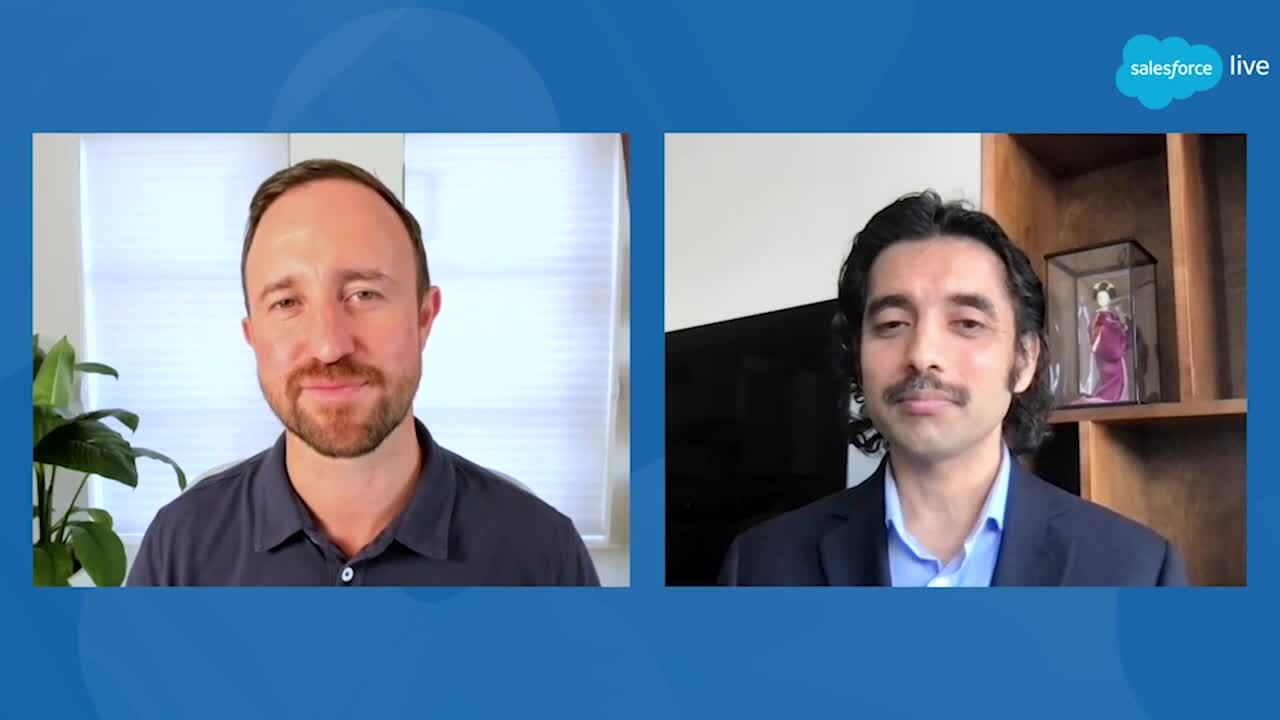WatchBox is making good time with their digital transformation of a global luxury goods brand. This buyer, seller, trader, and online community for high-value pre-owned watches (and the people who love them) has more than $200 million in revenue, and a Trailblazing leader at the helm.
Chief Technology Officer Shrivathsa Ballal recently sat in conversation with MuleSoft Senior Vice President of Product Management Liam Doyle. Together they discussed WatchBox’s use of MuleSoft Composer for Salesforce, a tool launched March 15, 2021 that helps business users and non-developers integrate apps with clicks, not code. They also outline the challenges of building trust for online luxury brands, and the pitfalls and opportunities of data governance and data management.
If you’ve watched this episode of Leading Through Change, or even if you haven’t, here are a few highlights from the episode:
How have luxury goods retailers like WatchBox worked to instill customer trust in online commerce?
Traditionally, luxury goods have been transacted in-person at brick and mortar stores. The authenticity that WatchBox brings to the table has increased the confidence of our customers. Our traders and our client advisers are real humans on the other end of the phone providing that much needed white glove treatment to customers, increasing their confidence and their ability to close the transaction seamlessly.
Our WatchBox guarantee program supports the products that customers invest an ultra-high amount of dollars into. And now, with recent technology improvements, our website provides authentic content and inventory, including all the fine details of a luxury watch, clearly visible to our customers. We see that our customers have less concerns about the authenticity and quality of the product that they’re interested in. This is unusual in this segment of products; unless you’re careful, you could run into fake or not-genuine products.
How has your approach to integration and automation allowed you to stay agile?
Tremendously, I should say. Our end-to-end integration includes commerce, sales, marketing, external and internal platforms, and our data warehouse using MuleSoft. All of this combined has made real-time integration a reality for us.
Our transactions are simultaneously pursued by multiple traders or client advisors all over the world. Our trading platform is on a custom-built sales cloud CRM, and this has dramatically reduced the need for conversations between sales teams sitting in different time zones.
It also ensures that the value of the transaction is fully understood by everyone. Since the value of our inventory tends to follow market demand, it would be hurting our business, as well as our customers, if we did not price our product according to market trends. The only way we can do this is to gather data in real-time, across multiple transactions, and more importantly, make the data available and usable by other traders in real-time. In a way, we have enabled data democracy within the organization by leveraging all the key pillars of Salesforce as a connected cloud architecture – and using MuleSoft as the center of integration.
What do you see as the current and future challenges with managing all this data?
Our current challenge with the data is that when a customer completes a transaction with us offline, we want to see where they originated their journey that landed them at WatchBox. We want to be able to tie together all the steps they may have taken with our sales and marketing initiatives. We want to be able to understand the levers that we can pull to increase our customer’s journey from the web into our funnel, which would eventually see them convert into successful customers with a completed transaction.
Online platforms are increasingly driven by digital marketing and advertisements, including social media platforms. It’s extremely important to cater to our prospects to help them become customers without losing them along the way.
Can you share your approach to data security and data governance?
Oh, absolutely. With online platforms capturing more personally identifiable information – what we consider sensitive data about individuals – we’ve had to consider the adoption of the General Data Protection Regulation (GDPR) and other data governance policies and regulations throughout our digital platform implementation. The features and abilities of Commerce Cloud, Sales Cloud, and MuleSoft help us make sure we don’t leave any customer’s data in a state of being compromised. It’s important for us to grow our customer’s trust and confidence.
This post is the latest installment of Leading Through Change, our video conversation series with industry and thought leaders who use Salesforce products to transform the way they work.





























